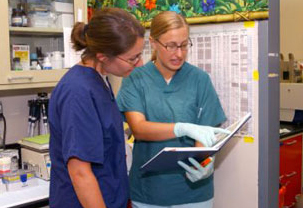Kansas? Why would you go to Kansas?
That’s the question I repeatedly received back in 2006 when I officially made the move. Sure, Amy was a great draw, but the lack of a hockey arena and the distance to the airport were significant detriments.
The community, both at Kansas State University and Manhattan, was fairly inviting. They’re not sure what to make of me walking around with a baby strapped to my belly, but every place has its quirks.
I just wanted to be in an environment where I could give 110 per cent, cause there’s no I in team. I just wanted to be someplace where I could do my thing.
 So when the U.S. Department of Homeland Security finalized its decision today to approve a site at Kansas State University for a $450 million lab to study livestock diseases and some of the world’s most dangerous biological threats, I wasn’t surprised.
So when the U.S. Department of Homeland Security finalized its decision today to approve a site at Kansas State University for a $450 million lab to study livestock diseases and some of the world’s most dangerous biological threats, I wasn’t surprised.
DHS released its final record of the approval Monday, confirming a decision announced in December to build the National Bio and Agro-Defense Facility at the Manhattan, Kan., campus to replace an aging lab at Plum Island, N.Y.
Ralph Richardson, dean of the College of Veterinary Medicine at Kansas State (right), told USA Today today that the lab can be operated safely.
"This country is in great need of a modern laboratory for animal diseases.”
And Manhattan (Kansas) is the best place for it.

.jpg) There aren’t too many jobs out there where employees are required to go through a decontamination shower each day before going home, along with a 30 minute ferry ride. Yet that is just what I got to do during my summer at Plum Island Animal Disease Center. The K-State College of Veterinary Medicine published a short write-up about it in their Sept issue of
There aren’t too many jobs out there where employees are required to go through a decontamination shower each day before going home, along with a 30 minute ferry ride. Yet that is just what I got to do during my summer at Plum Island Animal Disease Center. The K-State College of Veterinary Medicine published a short write-up about it in their Sept issue of 

 So when the U.S. Department of Homeland Security
So when the U.S. Department of Homeland Security  The new lab would replace an aging 24-acre research complex on Plum Island, about four miles off the eastern shore of Long Island, N.Y.
The new lab would replace an aging 24-acre research complex on Plum Island, about four miles off the eastern shore of Long Island, N.Y.